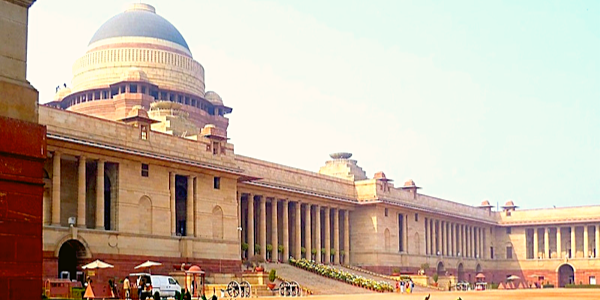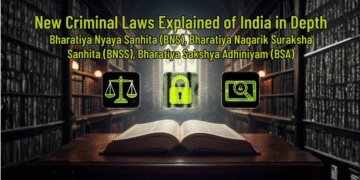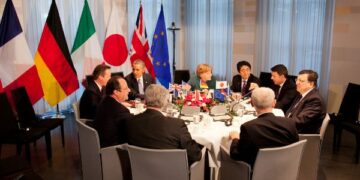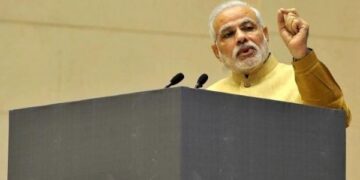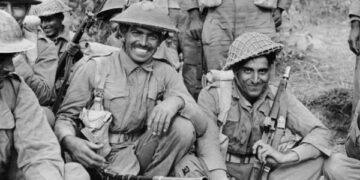This article will provide you with all pertinent information on the first Governor- General of Bengal, various Governors- General of India, their accomplishments, and important events during their time as Governor- Generals or Viceroys of India. Also, here you will find the list of viceroys or Governor- General of India from 1858 to 1947. Also, Most competitive tests, including the IAS Exam, cover this subject in the general awareness portion. So let’s begin.
- Introduction: First Governor General of India
- From the First to the Last Governor General of Bengal List
- List of Governors General of India from the First to the Last
- List of Viceroys in India (Governor General of India)
- Conclusion– First Governor General of India
- FAQ– First Governor General of India
- Editor's Note | First Governor General of India
Introduction: First Governor General of India
When the East India Company got a Royal Charter from Queen Elizabeth I on December 31, 1600, British dominion over India began as a trade unit. Therefore, the British transformed from commercial power to one of the world’s most powerful governments in less than three centuries.
Also, despite being a small island nation, Britain was able to build one of the world’s largest empires. The expression “the empire on which the Sun never sets” can describe the empire’s size.
Thanks to the solid and efficient bureaucracies it developed in its colonies, Britain accomplished this incredible accomplishment. Through Governor- Generals and Viceroys, the British established dominance in India.
Presidencies were used to split British possessions into administrative entities. Bengal, Madras, and Bombay were the three presidencies. A Governor is in charge of each. Therefore, The Governor General was the highest-ranking official in the administration. Also, The first Governor General, Warren Hastings, instituted a number of administrative reforms, particularly in the area of justice.
Similarly, another key topic for UPSC preparation is The Supreme Court of India (Delhi) – Total Judges, Established, and Article. When Supreme Court was founded, the number of judges on the Court and a Supreme Court article are all available here.
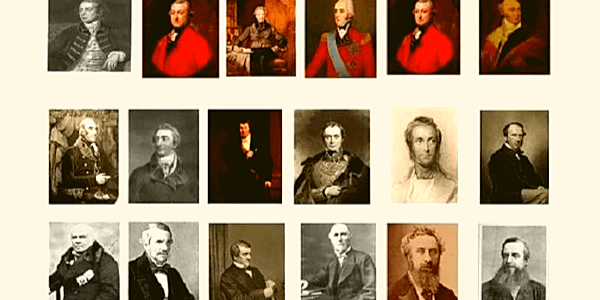
The First Bengal Governor General (India 1773-1833)
- When the East India Company arrived in India, it established a role known as “Governor of Bengal.” The 1st Governor of Bengal was Robert Clive.
- Bombay and Madras had their governors.
- The post of Governor of Bengal was replaced by “Governor General of Bengal” after the Regulating Act of 1773. (Also, the first Governor General of Bengal, Warren Hastings).
- Therefore, The Governors of Bombay and Madras functioned under the Governor General of Bengal under this Act.
India’s First Governor General (1833-58)
Governor-General of Bengal was renamed “Governor-General of India” by the Charter Act of 1833. William Bentinck was the first Governor General of India.
This position was primarily administrative and reported to the East India Company’s Court of Directors.
First Viceroy of India (1858-1947) Governor General
- The company rule was ended after the uprising of 1857. India was returned to the British crown’s direct sovereignty.
- The Government of India Act of 1858 altered the title of Viceroy of India from Governor General of India.
- The British government appoints the Viceroy directly.
- Lord Canning was India’s first Viceroy.
From the First to the Last Governor General of Bengal List
Here is a list of Bengal’s Governors General.
- Warren Hashting (1772–1785)
- Bengal’s first Governor General
- The dual administration system must come to an end.
- 1773 Regulating Act
- Calcutta Supreme Court
- Bengal Asiatic Society
- The Treaty of Salbai and the First Anglo-Maratha War
- The Bhagavad Gita was the first to be translated into English.
- 1784 Pitt’s India Act
- Cornwallis, Lord (1786–1793)
- Establishment of appellate and lower-level courts
- Third Anglo-Mysore War and Treaty of Seringapatam
- Establishment of a Sanskrit College
- Permanent Settlement and civil services are being implemented.
- Sir John Shore (1793–1798)
- Charter Act of 1793
- Non-intervention Policy
- Battle of Kharda
- Lord Wellesley (1798–1805)
- Subsidiary Alliance System Implementation
- The Treaty of Bassein and the Fourth Anglo-Mysore War
- The Second Anglo-Maratha War
- Madras presidency is established.
- Creating Fort William College in Calcutta
- Sir George Barlow (1805–1813)
- Acting Governor General of India until the arrival of Lord Minto. Also, He reduced the size of British territory due to his love of economy and retrenchment.
- The Mutiny of Vellore occurred in 1806.
- Lord Minto l (1807–1813)
- In 1809, he signed the Amritsar Treaty with Maharaja Ranjit Singh.
- In 1813, he passed the Charter Act.
- Lord Hasting (1813–1823)
- The third Anglo-Maratha conflict brought the policy of non-intervention to an end.
- Peshwaship abolishment
- In Madras (by Thomas Munroe) and Bombay, the Ryotwari System is established.
- North-western provinces and Bombay have a Mahalwari system.
- Lord Amherst (1823–1828)
- Assam’s annexation triggered the first Burmese war in 1824.
- The Barrackpore Mutiny of 1824
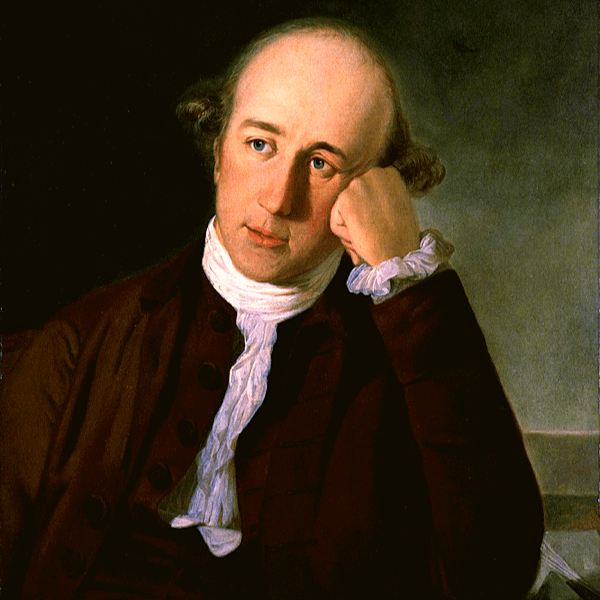
List of Governors General of India from the First to the Last
The Charter Act of 1833 replaced the title “Governor-General of Bengal” In 1833, therefore, Lord William Bentinck was appointed as India’s first Governor-General. As a result, here is a list of the Governors General of India and their major changes.
- Lord William Bentinck
- India’s very first Governor General (The Governor General of Bengal appoints Governor-General of India under the 1833 Constitution Act.)
- Sati’s abolishment
- Infanticide and child sacrifices were all used to suppress the Thugee.
- The Act of 1835 on English Education
- Kolkata Hospital and Medical College
- Lord Charles Metcalfe
- ‘All limitations on an open press were removed by the Indian press liberator.’
- Auckland, Lord
- He dedicated his life to improving native schools and expanding India’s commercial enterprise.
- The first conflict was between the United Kingdom and Afghanistan.
- Lord Ellenborough
- Annexed Sindh
- Lord Hardinge I
- First Anglo-Sikh War (1845–1846)
- Dalhousie, Lord (Governors General of India)
- Introduction to ‘Doctrine of Lapse’.
- The Good Doctrine
- Dispatch by Charles Wood
- 1854 Post Office Act
- The first railway line between Bombay & Thane
- Roorkee has a well-established engineering college.
- The Anglo-Sikh War II
- The initial telegraph line
- The Public Works Department is established.
- Titles and pensions will be abolished.
- The test for the Indian Civil Services has begun.
- Also, Act on Widow Remarriage
- Lord Canning
- In 1857, three universities were founded in Calcutta, Madras, and Bombay.
- The 1857 Revolt took happened.
As a result when the Governor General of India became Viceroy of India. Canning became the first Viceroy of India after the 1857 Revolt.
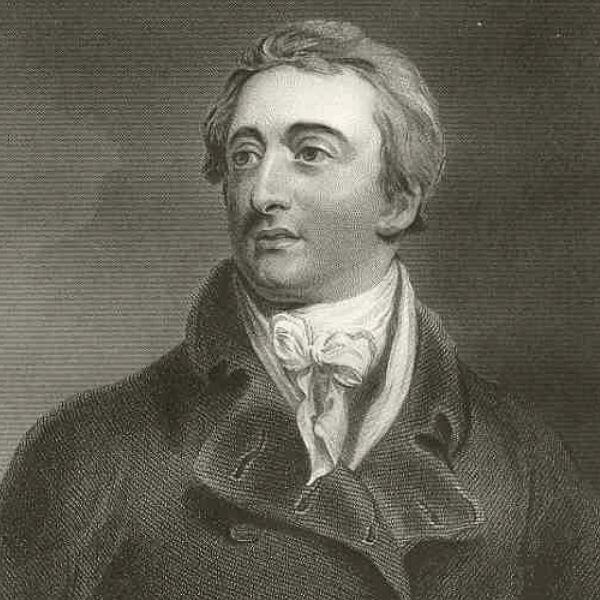
List of Viceroys in India (Governor General of India)
The following is a list of Viceroys in India, Also, along with their accomplishments that are relevant to the next civil service exam:
Lord Canning
- The Govt of India Act was passed in 1858.
- Lord Canning served as India’s first Viceroy.
- The 1857 Sepoy Mutiny
- The Indian Councils Act of 1861.
- Abandonment of “Lapse Doctrine.”
- The Code of Criminal Procedure is implemented.
- The Indian High Courts Act was passed.
Lord Elgin
- The Wahabi Movement
- Introduction of High Court judicature in Bengal.
Lord Lawrence
- During his reign, he established the high court in Calcutta and Madras.
- The Anglo-Bhutanese conflict
- Sikh War
Lord Mayo
- For the first time, financial distribution between the Center and the state is introduced.
- The first census was in 1872.
- Mayo College was established for the royal elite.
- Lord Mayo was the sole Governor General assassinated in India. Sher Ali Afridi assassinated him in Port Blair.
- Establishment of the Indian Statistical Survey
Lord Northbrook
- Introduction of Civil Marriage and Arya Samaj Marriage
- In 1872, the Universal Marriage Act was introduced.
- Intercaste marriage permitted
- Also, the Kuka Movement in Punjab.
Lord Lytton
- On January 1, 1877, Lytton staged a Darbar in Delhi, when Queen Victoria was proclaimed Queen Empress of India with great pomp and circumstance, even though India was in the grip of famine.
- In 1878, the Vernacular Press Act was passed.
- In 1878, the Arms Act was passed.
- He established the Statutory Civil Service to provide jobs to loyal Indians.
- The Cotton tax was abolished for British traders.
- The maximum age for taking the Civil Services Exam has been reduced from 21 to 19.
Lord Ripon
- The most popular Governor General of India
- The controversial Arms and Vernacular Press Act has been repealed.
- He is recognized as the Father of Self Government because he established local self-governments like as Panchayats and Municipal Boards.
- Punjab University was established in 1884, as well as Allahabad University was established in 1887.
- Illbert Bill – Appointment of Hunter Commission
Lord Dufferin
- Anglo- Burmese War III (1885–1886)
- The Indian National Congress was established in 1885.
Lord Lansdowne
- Act of 1892 establishing Indian councils (Indirect election was introduced for the first time)
- 1891, Factory Act
Lord Elgin II
- Rands, the first British officer, was assassinated.
- Chapekar (Ramkrishna & Damodar) Brothers killed him.
- Also, The first political assassination.
Lord Curzon
- The Indian Universities Act is intended to regulate Indian universities.
- Commission of Raleigh
- Bengali partition
- The Curzon-Kitchener feud
Lord Minto II
- Minto – Morley reforms
Lord Hardinge ll
- Campaign in Mesopotamia
- Capital transfer from Calcutta to Delhi
- Madan Mohan Malaviya founded the Hindu Mahasabha.
Lord Chelmsford
- Movements in the Home Rule League
- The Rowlatt Act enacts
- The Montague–Chelmsford reform was enacted.
Lord Reading
- Swaraj Party was established.
- The Chauri – Chaura incident occurred.
Lord Irwin
- Dandi march and civil disobedience movement launch
- The first round table discussion took place.
- Irwin-Gandhi Pact
Lord Willingdon
- Round Table Conferences 2 and 3
- The Poona Accord was signed.
- The Communal Award was established.
- Burma is split from India.
Lord Linlithgow
- Mission Cripps
- Quit India movement
- Jinnah’s theory of two nations.
- The Indian National Army was founded.
Lord Wavell
- Formula CR 1944
- Day of Direct Action Launch
- Shimla Conference & Wavell Plan
Lord Mountbatten
- Lord Mountbatten served as India’s last Viceroy.
- Free India’s first Governor General.
- Plan for third June
- Commission of Redcliff (1947)
- Independence of India (15 August 1947)
Chakravarti Rajagopalachari
- C Rajgopalachari was the last Governor General of India, and the position was abolished after him.
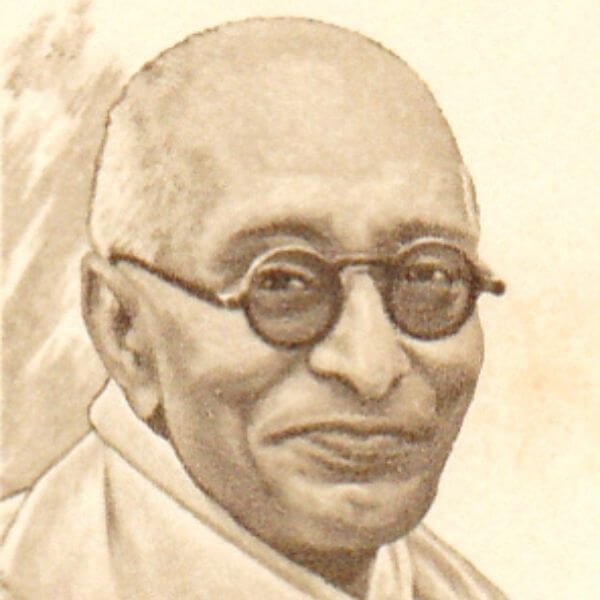
Conclusion– First Governor General of India
Finally, we have provided information about the first Governor-General of Bengal, various lists of Governors General in India, the first and last Viceroys of India, their accomplishments, and other relevant information such as Incident, Date, and so on. Although, therefore, this is a vital topic for your UPSC exam, please make a list of key points as you read so that you may review it during the exam. Additionally, doing so will save you time. In addition, Exam notices and other announcements can also be found on the UPSC’s official website.
FAQ– First Governor General of India
The first Governor General of British India, William Bentick, was a British officer. Also, The Governor General of Bengal was appointed Governor General of British India following the passage of the Charter Act of 1833.
Chakravarti Rajagopalachari
The title of Viceroy was removed after the country gained independence in August 1947.
The first Viceroy of India was Lord Canning. From 1858 to 1862, Also, he was in office for four years.
Editor’s Note | First Governor General of India
In conclusion, this page will provide you with a complete list of the first Governor General of India and the last Viceroy of India. We’ve also included notable dates and events. So read the whole thing. Furthermore, passing the IAS exam requires hard work and extra effort. Also, take mock exams to improve your exam performance.As a result, the only thing that matters for the IAS exam is thorough preparation, and a never give up mentality. Finally, Best Wishes!

